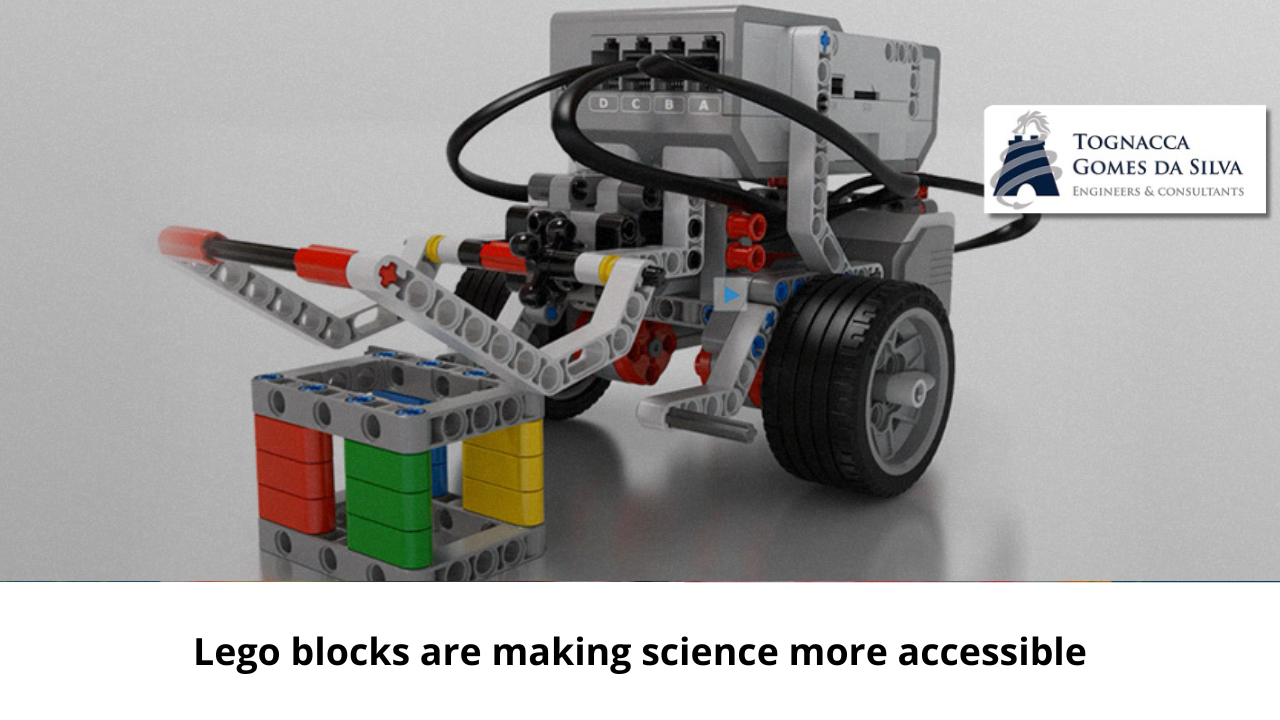Etienne Boulter walked into his laboratory at the Université Côte d’Azur in Nice, France, one morning with a Lego Technic excavator set under his arm. His plan was simple but ambitious: use the pieces from the set to build a mechanical cell stretcher.
Boulter and his colleagues study mechanobiology—the way mechanical forces like stretching and compression affect cells—and this equipment is essential to their research. Commercial cell stretchers cost more than $50,000.
But one day, after playing with the Lego set, Boulter and his colleagues discovered a way to build one from its components for just over $200. His Lego system stretches a silicone plate where cells are growing. This process causes cells to deform and mimics the way our own skin cells stretch.
Sets like these are ideal for repurposing, says Boulter: “If you go through Lego Technic, you have the motors, the wheels, the axles – everything you need to build a system like this.” His model was so successful that ten different laboratories around the world contacted him for plans in order to build their own low-cost Lego stretchers.
Boulter is one of many researchers turning to Lego components to build inexpensive, yet extremely effective laboratory equipment. The bricks themselves are durable and manufactured to tight tolerances. Lego’s offerings include sensors that can detect various colors, sense rotational movements and measure the distance to an object. These DIY tools are a creative and cost-effective solution for working scientists trying to keep costs down.
Take, for example, the Lego chromatograph designed by Cassandra Quave and her husband, Marco Caputo, both from Emory University in the United States. Quave is an ethnobotanist who leads a research group dedicated to documenting traditional medicines.
His team travels deep into forests and jungles around the world, collecting samples of leaves, berries and seeds evaluated for their potential pharmaceutical value. To isolate chemical compounds from plant samples, Quave uses a meticulous process called chromatography, in which distilled plant liquid runs through a tube filled with a material like silica gel.
Timing in chromatography needs to be very exact, with small amounts of liquid added at precise times. Waiting for these moments is not the best use of a graduate student’s time. That’s exactly what Quave thought when he walked into the lab one day and saw his doctoral student Huaqiao Tang holding a test tube and watching the clock. “This is crazy!” said Quave, laughing. “We can find a better solution!”
When Quave told Caputo about his problem, he brought out Legos from his four children’s enormous collection, and asked his students to see what they could do with the toys. They created a robotic arm capable of making precise and repeated movements, gradually adding small fractions of liquid to test tubes, in order to isolate compounds in plant tissue. The device was so precise in its movements, says Quave, that spontaneous crystals formed, something that only occurs in very pure substances.
At Cardiff University in Wales, Christopher Thomas, Oliver Castell and Sion Coulman had similar success in building an instrument capable of printing cells. Researchers study skin diseases, lipids (fatty compounds) in the body, and wound healing. Since it is difficult to find ethically obtained samples, they created a 3D bioprinter from Lego bricks that is capable of “printing” a human skin analogue by layering biological ink that contains living cells.
Typically, these printers cost over a quarter of a million dollars, but they built their version for just $550. At first, his colleagues were skeptical that components normally treated as toys could be used in such a professional environment, but after seeing the printer in operation, they were quickly convinced. The team made national news, and other groups replicated the model in their own labs.
Some scientists are creating tools to take into the classroom. Timo Betz of the University of Göttingen in Germany came up with the idea of building a Lego microscope while watching his son, Emil, then eight, play one day.
Betz was scheduled to speak about science at a local school that afternoon, but was reluctant to take his own laboratory microscope into the classroom. His son immediately agreed. “Let’s make one!”, he told his father. Together with Bart Vos, a colleague from the university, they built a microscope entirely made of Lego bricks, with the exception of two optical lenses. His plans, which have been made available to the public, can be used by students aged 12 and over to learn the basics of optics.
Many of these scientists have made their models open source, providing them to interested groups, uploading the plans to GitHub, or publishing them in papers so that other labs can create their own versions. This is beneficial for researchers around the world, especially those with limited funding – whether they are new faculty members, scientists from smaller universities, or workers from low-income countries. This is how a small plastic brick is making Science more accessible to everyone.
( fonte: MIT Technology Review )



